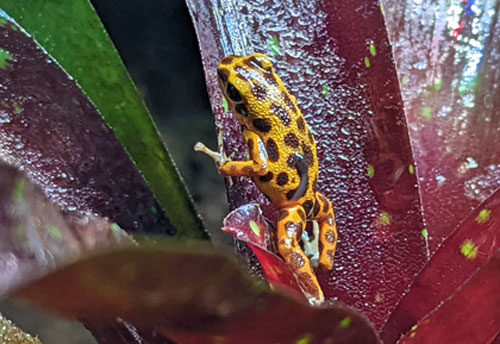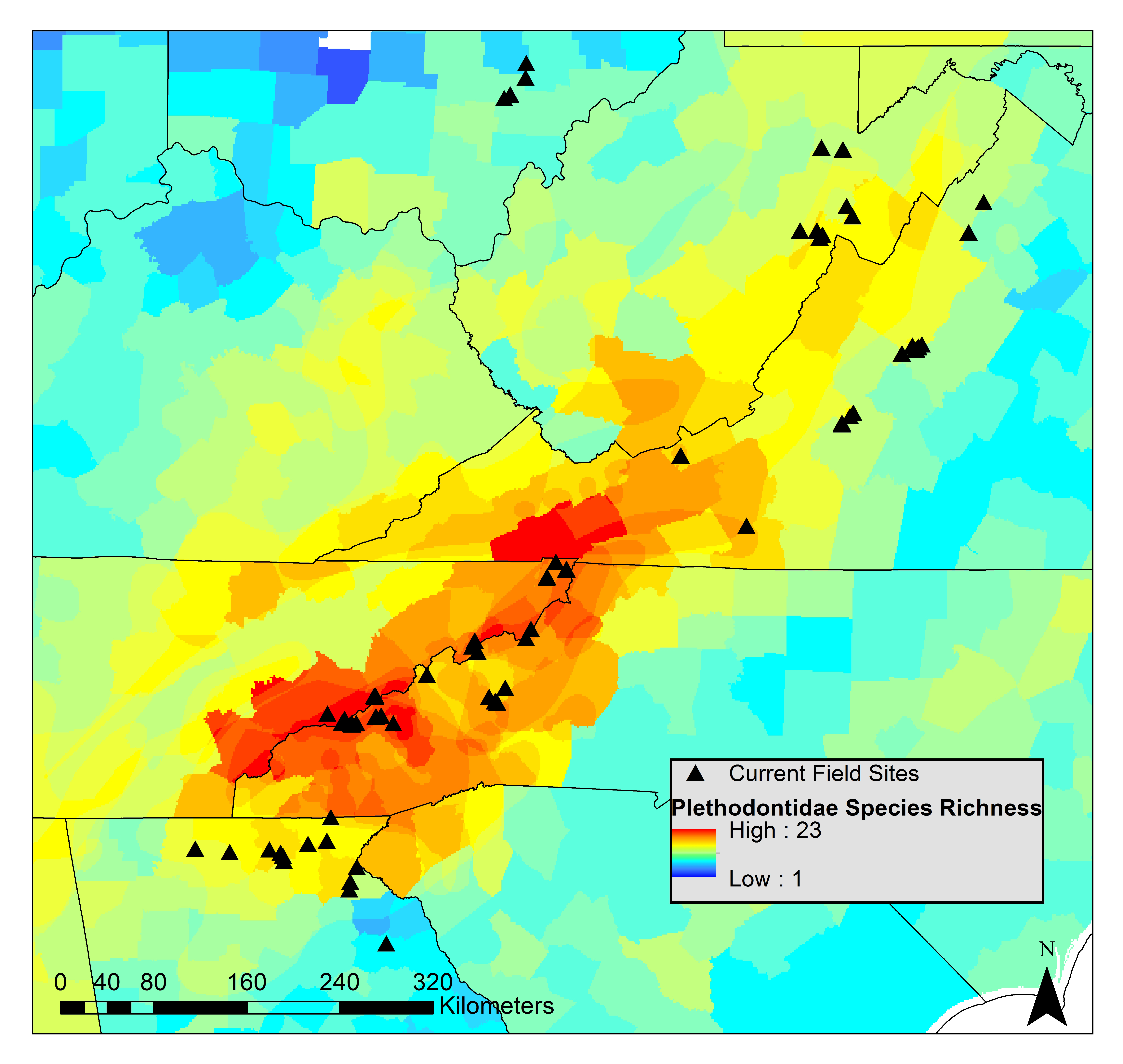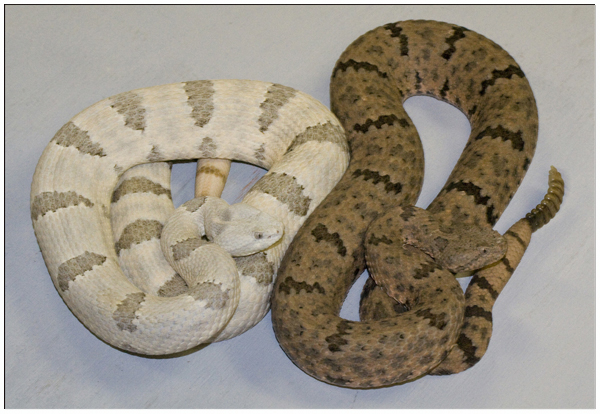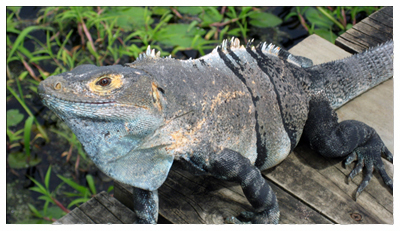Research Interests
Current Research:
Ecophysiology of alkaloid sequestration in dendrobatid frogs
 Many poison frogs, including members of the family Dendrobatidae, acquire chemical defenses by sequestering alkaloids from their diet (e.g., ants and mites). The amount and type of alkaloids sequestered varies by species and even population. If physiology varies depending on the type or amount of alkaloid sequestered then individual geographic regions may be more at risk to disease of climate change. There is also tremendous variation in behavior with some species exhibiting extensive parental care such as species from the genus Oophaga that feed tadpoles unfertilized eggs while species in other genera such as Phyllobates and Dendrobates leave the tadpoles to fend for themselves. It is unclear if these behavioral differences impact physiology especially in conjunction with alkaloid sequestration. My lab is interested in understanding how alkaloid sequestration impacts physiological processes such as their metabolism, thermal preference, and critical thermal maximum and use these data to determine evolutionary patterns and highlight species and populations of species conservation concern.
Many poison frogs, including members of the family Dendrobatidae, acquire chemical defenses by sequestering alkaloids from their diet (e.g., ants and mites). The amount and type of alkaloids sequestered varies by species and even population. If physiology varies depending on the type or amount of alkaloid sequestered then individual geographic regions may be more at risk to disease of climate change. There is also tremendous variation in behavior with some species exhibiting extensive parental care such as species from the genus Oophaga that feed tadpoles unfertilized eggs while species in other genera such as Phyllobates and Dendrobates leave the tadpoles to fend for themselves. It is unclear if these behavioral differences impact physiology especially in conjunction with alkaloid sequestration. My lab is interested in understanding how alkaloid sequestration impacts physiological processes such as their metabolism, thermal preference, and critical thermal maximum and use these data to determine evolutionary patterns and highlight species and populations of species conservation concern.
Microhabitat use of plethodontid salamanders
The importance of microhabitats has played a role in my research for the past decade. At the University of Scranton, I am continuing my research on microhabitat use of Plethodontid salamander with an emphasis on their use of soil. Plethodontid salamanders spend a substantial amount of time underground to avoid deleterious environmental conditions (e.g., too hot or cold; too dry). However, very little is known about activities that occur underground or how differences in soil type/structure may impact salamander performance. I believe the importance of soil and underground microhabitats may be especially relavent for microendemic species such as the Peaks of Otter (Plethodon hubrichti) and Big Levels (P. sherando) salamanders. These species have extremely restricted ranges and are surrounded by the closely related Eastern Red-backed salamander (P. cinereus). My lab will be quantifying the soil within the range of these microendemic species and comparing it to adjacent locations where Eastern Red-backed salamanders are present. If we find differences in the soil structure, we will expand to include performance experiments.Plethodontid salamander physiology and biophysical modeling
One of the defining characteristics of plethodontid salamanders is that they lack lungs and breathe through their skin. This aspect of their anatomy and physiology means that these salamanders typically require cool and moist conditions to be active. Although the group requires these types of conditions, individual species may have variable tolerances and performance capabilities under individual thermal or hydric conditions. There may also be differences between populations that have been exposed to different environmental conditions, such as populations exposed to forest fires. These differences can also be used to model where and when a species or individual population is expected to be active and also estimate energy expenditure under various environmental conditions. I will be comparing thermal preferences and tolerances as well as metabolic and water loss rates of plethodontid species. The goal will be to help establish evolutionary patterns in plethodontid physiology and develop biophysical models to help better understand how species will be impacted by climate change.

Evolutionary ecology of Plethodontid salamanders
My dissertation work at Ohio University focused on the evolutionary ecology of Plethodontid salamanders. I was specifically investigating this topic from the perspective of microhabitat. I wanted to find out how microhabitat use differed between species, how these variables influence the distributions of plethodontid species, and if there were any evolutionary patterns in how species us microhabitats. I found differences in microhabitat use between wide-spread and range restricted species. My research also provided evidence that salamanders may be actively selecting microhabitats with preferential cool and moist microclimates. By actively selecting prefer conditions, this may limit the ability for species to evolve to changing climatic conditions. I also found evolutionary patterns in microhabitat use that highlights the importance of addressing questions at biologically relevant spatial and temporal scales. Overall, the results of my dissertation work served as a backbone for my continuing research described above.
Field Assistants (2015 and earlier)
Previous Research:
Color polymorphism of mottled rock rattlesnakes (Crotalus l. lepidus)
 My interests are varied, but a common theme is herpetology. My master's work focused on the maintenance of color polymorphism in mottled rock rattlesnakes (Crotalus l. lepidus). This species exhibits strong levels of color and pattern polymorphism throughout its range primarily separated into a western race composed of dark colored individuals and an eastern race composed of light colored individuals. The eastern race commonly has anterior fading of blotching. The western race coincides with dark volcanic rock and soils while the eastern race coincides with limestone and light-colored substrate. I performed a predation experiment to determine the role of predation on the evolution of these dramatically variable color morphs.
My interests are varied, but a common theme is herpetology. My master's work focused on the maintenance of color polymorphism in mottled rock rattlesnakes (Crotalus l. lepidus). This species exhibits strong levels of color and pattern polymorphism throughout its range primarily separated into a western race composed of dark colored individuals and an eastern race composed of light colored individuals. The eastern race commonly has anterior fading of blotching. The western race coincides with dark volcanic rock and soils while the eastern race coincides with limestone and light-colored substrate. I performed a predation experiment to determine the role of predation on the evolution of these dramatically variable color morphs.
Foraging behavior of black spiny-tailed iguanas (Ctenosaura similis) in the presence of predator cues
 I examined the foraging behavior of black spiny-tailed iguanas at the Palo Verde Research Station located in the Guanacaste province of Costa Rica. Iguanas at this station are relatively habituated to humans which allowed me to observe individuals without altering their behavior. Feeding stations were set up in known foraging locations. Each feeding station was adjacent to container holding either a Boa constrictor, Boa feces, or no stimulus. Iguana foraging activity was noted and analyzed to determine their response to each stimulus.
I examined the foraging behavior of black spiny-tailed iguanas at the Palo Verde Research Station located in the Guanacaste province of Costa Rica. Iguanas at this station are relatively habituated to humans which allowed me to observe individuals without altering their behavior. Feeding stations were set up in known foraging locations. Each feeding station was adjacent to container holding either a Boa constrictor, Boa feces, or no stimulus. Iguana foraging activity was noted and analyzed to determine their response to each stimulus.